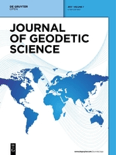
Journal of Geodetic Science
Scope & Guideline
Catalyzing Interdisciplinary Collaboration in Geodesy.
Introduction
Aims and Scopes
- Global Navigation Satellite Systems (GNSS) Applications:
The journal emphasizes research on GNSS technologies, including positioning, navigation, and timing applications. This includes innovative methodologies for improving GNSS accuracy and reliability. - Geodetic Modeling and Analysis:
Research on geodetic modeling techniques, such as the analysis of gravity fields, geoid models, and reference frame transformations, is a key area. This includes both theoretical and computational approaches. - Geophysical Phenomena and Their Measurements:
The journal covers studies related to geophysical phenomena, such as earthquakes, sea level change, and soil moisture estimation, using various geodetic techniques including InSAR and VLBI. - Innovations in Geodesy and Remote Sensing:
The journal showcases advancements in geodetic technology and methodologies, such as the integration of deep learning and machine learning approaches for data analysis and interpretation. - Regional Geodetic Studies:
Special attention is given to geodetic studies focused on specific regions, addressing local geodetic networks and their applications, such as transformations between different geodetic systems.
Trending and Emerging
- Integration of Machine Learning and AI in Geodesy:
There is a noticeable increase in studies utilizing machine learning and artificial intelligence techniques for geodetic data analysis, such as GNSS data processing and soil moisture estimation. This trend showcases the potential for enhanced accuracy and efficiency in geodetic applications. - Real-Time Data Processing and Applications:
Research focusing on real-time GNSS data processing and applications is gaining traction, particularly in the context of monitoring geophysical events and providing timely information for disaster response. - Collaborative International Geodetic Networks:
Emerging themes include the development and analysis of collaborative international geodetic networks, emphasizing the importance of global cooperation for accurate geodetic measurements and reference frame realizations. - Advanced Remote Sensing Techniques:
The use of advanced remote sensing technologies, such as InSAR and satellite altimetry, for monitoring and analyzing geophysical changes is becoming increasingly prominent, reflecting the growing importance of these methods in geodetic science. - Geodetic Impacts of Climate Change:
Research addressing the implications of climate change on geodetic measurements, such as sea level rise and its effects on coastal geodesy, is emerging as a crucial area of focus.
Declining or Waning
- Historical Geodesy Studies:
Research that focuses on the historical aspects of geodesy, including the development of geodetic systems and practices, has seen a decrease in recent publications, indicating a shift towards more contemporary applications and technologies. - Basic Theoretical Geodesy:
Studies centered on foundational theoretical concepts without practical application seem to be less frequent. There is a growing preference for applied research that addresses current geodetic challenges. - Traditional Surveying Techniques:
Research related to conventional surveying methods is appearing less frequently. The trend is moving towards the integration of modern technology and methodologies, such as GNSS and remote sensing.
Similar Journals

Journal of Applied Remote Sensing
Empowering Solutions Through Applied Remote SensingJournal of Applied Remote Sensing, published by SPIE-SOC PHOTO-OPTICAL INSTRUMENTATION ENGINEERS, stands at the forefront of research in the interdisciplinary field of applied remote sensing, focusing on innovative applications and advancements in technology that support our understanding of the Earth's systems. Established in 2007, this journal has quickly gained recognition, currently holding a Q2 ranking in the Earth and Planetary Sciences category, reflecting its influence and quality within the academic community, with a Scopus ranking of #68 out of 195 in General Earth and Planetary Sciences. The journal provides a robust platform for researchers, professionals, and students to disseminate their findings, ensuring open avenues for knowledge exchange in a field that increasingly impacts environmental monitoring, disaster management, and resource management. With its E-ISSN 1931-3195, the Journal of Applied Remote Sensing remains committed to advancing scholarly communication, fostering innovations that respond to real-world challenges, and enhancing remote sensing applications across diverse sectors. The journal operates from its headquarters in Bellingham, WA, USA, and aims to portray cutting-edge research that enriches the academic literature and informs policy and practice.
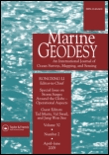
MARINE GEODESY
Illuminating the Secrets of Marine Spatial DynamicsMARINE GEODESY, an esteemed journal published by Taylor & Francis Inc, delves into the intricate field of oceanography, aiming to contribute profoundly to the understanding of marine spatial dynamics and geophysical processes. With an ISSN of 0149-0419 and an E-ISSN of 1521-060X, this journal has a commendable standing, currently classified in the 2023 Q2 quartile, reflecting its influential presence in the realm of Earth and Planetary Sciences, particularly oceanography, where it ranks 49th out of 145 journals. Since its inception in 1977 and its ongoing publication until 2024, MARINE GEODESY has been dedicated to disseminating groundbreaking research, case studies, and reviews that are crucial for scholars, professionals, and students engaged in the exploration of marine environments. While currently not an open-access journal, it nevertheless offers vital insights into marine geospatial analytics and geodesy, augmenting the knowledge base necessary for tackling contemporary challenges in marine science and geography.

Boletim de Ciencias Geodesicas
Empowering the Geoscience Community with Open Access FindingsBoletim de Ciências Geodésicas is an esteemed academic journal published by the Universidade Federal do Paraná within its Centro Politécnico. Focused on the dynamic field of Earth and Planetary Sciences, this Open Access journal has been a pivotal resource since 1997, fostering the dissemination of critical research and innovative methodologies. With an impact factor indicative of its relevance in the discipline, Boletim de Ciências Geodésicas ranks in the Q3 quartile for Earth and Planetary Sciences as of 2023, showcasing its commitment to quality scholarship in a competitive field. Researchers and students alike will benefit from access to cutting-edge findings, given its broad scope that encompasses various aspects of geodesy and related sciences. The journal's convergence of research from 2005 to 2024 ensures that it remains at the forefront of emerging trends and fundamental developments in the discipline, further enhancing its esteemed reputation in the academic community.

Geophysics and Geophysical Exploration
Fostering Insights and Innovations in Geophysical ScienceGeophysics and Geophysical Exploration is a prestigious journal dedicated to advancing the fields of geophysics and geophysical exploration. Published by the Korean Society of Earth & Exploration Geophysicists, this journal serves as a vital platform for researchers, professionals, and students to share innovative findings and developments in geophysical methods and technologies. The journal covers a broad range of topics including but not limited to seismic analysis, subsurface modeling, and remote sensing techniques, aimed at addressing the complex challenges in Earth science exploration. Although it does not currently offer open access options, the journal maintains rigorous peer-review standards, ensuring high-quality and impactful research contributions. With its commitment to fostering knowledge exchange in the geophysical community, Geophysics and Geophysical Exploration plays a critical role in enhancing our understanding of the Earth, making it an essential resource for those interested in geoscience and related fields.
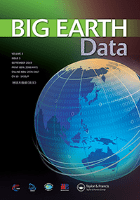
Big Earth Data
Unleashing the Power of Big Data for a Sustainable PlanetBig Earth Data is a prestigious open-access journal that has been at the forefront of advancing research in the intersection of earth science and computer technology since its inception in 2017. Published by TAYLOR & FRANCIS LTD in the United Kingdom, this journal is dedicated to disseminating groundbreaking findings and innovative methodologies in the fields of Earth and Planetary Sciences and Computer Science Applications. With a commendable impact factor and an impressive positioning in the Scopus rankings—claiming Q1 status in Computers in Earth Sciences and Q2 in Computer Science Applications—it serves as a vital resource for researchers, professionals, and students alike. The journal encourages submissions that explore the integration of big data technologies in managing, analyzing, and visualizing earth-related data, thereby fostering interdisciplinary collaboration. Since embracing its open-access model, Big Earth Data has enhanced the accessibility of high-quality research, promoting a broader dialogue in the scientific community and contributing to informed decision-making in global environmental challenges.

JOURNAL OF GEODESY
Illuminating Earth’s Mysteries through Rigorous ResearchJOURNAL OF GEODESY, published by SPRINGER, is a premier academic journal dedicated to advancing the field of geodesy and its related disciplines. With an impact factor reflecting its high citation rate and rigorous peer-review process, this journal occupies a distinguished place in the academic community, categorized within the Q1 quartiles for Computers in Earth Sciences, Geochemistry and Petrology, and Geophysics as of 2023. The journal addresses various critical topics affecting our understanding of Earth’s shape, gravity field, and rotational dynamics, thus providing vital insights for researchers, professionals, and students alike. Derived from a legacy that spans from 1995 to 2024, the journal continues to publish significant contributions that foster growth in Earth and planetary sciences, with rankings that place it within the top tier of its categories: 10th in Geophysics, 13th in Geochemistry and Petrology, and 9th in Computers in Earth Sciences, all reflecting percentile rankings above 88%. Although Open Access options are not currently available, the journal remains an essential resource for advancing geodetic research across the globe. Explore the latest findings and connect with leading experts in the field through this highly regarded platform.
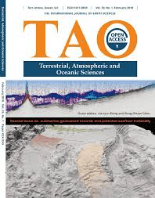
TERRESTRIAL ATMOSPHERIC AND OCEANIC SCIENCES
Bridging Oceans and Atmospheres Through ResearchTERRESTRIAL ATMOSPHERIC AND OCEANIC SCIENCES, published by SpringerNature, is a distinguished peer-reviewed journal that has been an essential platform for innovative research in the fields of atmospheric science, oceanography, and Earth and planetary sciences since its inception. With an Open Access policy established in 1990, the journal ensures wide dissemination of knowledge, allowing researchers, professionals, and students to access cutting-edge findings without restrictions. Based in Switzerland and featuring a comprehensive coverage from 1996 to 2024, the journal currently holds a Q3 ranking across various categories, indicating its growing significance in the scientific community. Although it is positioned within the 39th percentile in Earth and Planetary Sciences, its commitment to fostering high-quality research makes it a valuable resource for advancing understanding of terrestrial environments and their interconnections. Researchers seeking a platform for their work in atmospheric and oceanic sciences will find TERRESTRIAL ATMOSPHERIC AND OCEANIC SCIENCES to be an ideal venue for sharing their insights with a global audience.

Satellite Navigation
Unlocking Potential in Open Access Navigation StudiesSatellite Navigation, an esteemed journal published by SpringerNature, serves as a pivotal platform for advancing research in the fields of Aerospace Engineering, Electrical and Electronic Engineering, and Signal Processing. Since becoming an Open Access journal in 2020, it has allowed researchers worldwide to freely disseminate their findings, fostering a collaborative academic environment. With remarkable rankings, including the Q1 designation in three prestigious categories and a top percentile placement in Scopus—#2 in Aerospace Engineering and #4 in Computer Science Signal Processing—this journal is committed to publishing high-quality research that drives innovation in satellite navigation technology. As we move forward into the converged years of 2020 to 2024, Satellite Navigation aims to bridge theoretical and practical knowledge, making significant contributions to this vital area of study. Researchers, professionals, and students will find a wealth of valuable insights and advances, solidifying the journal’s status as a cornerstone in the navigation research community.

STUDIA GEOPHYSICA ET GEODAETICA
Exploring Earth's Mysteries Through Rigorous ResearchSTUDIA GEOPHYSICA ET GEODAETICA, published by Springer, is a prestigious scientific journal that has been at the forefront of the fields of Geochemistry, Petrology, and Geophysics since its inception in 1957. With an ISSN of 0039-3169 and an E-ISSN of 1573-1626, the journal serves as a vital platform for disseminating original research and reviews that enhance our understanding of the Earth’s processes. Situated in the Netherlands, the journal is indexed in notable databases, holding a respectable Tier Q3 ranking in both Geochemistry and Petrology, as well as Geophysics, based on the 2023 metrics. With its commitment to academic rigor, the journal seeks to engage a diverse audience of researchers, professionals, and students, facilitating vital discourse and advancements in Earth sciences. Although it does not currently offer open access options, it remains a significant resource for those aiming to contribute to or further their knowledge within these critical disciplines.
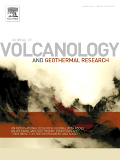
JOURNAL OF VOLCANOLOGY AND GEOTHERMAL RESEARCH
Pioneering Research in Geophysical PhenomenaWelcome to the Journal of Volcanology and Geothermal Research, a premier publication dedicated to advancing the understanding of volcanic and geothermal processes. Published by Elsevier in the Netherlands, this esteemed journal holds a distinguished Q1 ranking in both Geochemistry and Petrology and Geophysics, reflecting its influential contribution to the field. Since its inception in 1976, the journal has served as a critical platform for high-quality research, disseminating cutting-edge findings that shape the discourse surrounding Earth sciences. With an impressive Scopus ranking—27th in Geophysics and 43rd in Geochemistry and Petrology—scholars and practitioners alike regard it as an essential resource for staying informed on the latest research trends. Although it does not provide open access options, the journal remains committed to enriching the academic community's understanding of geothermal energy, volcanic hazards, and related geophysical phenomena, making it a must-read for anyone invested in these dynamic fields.